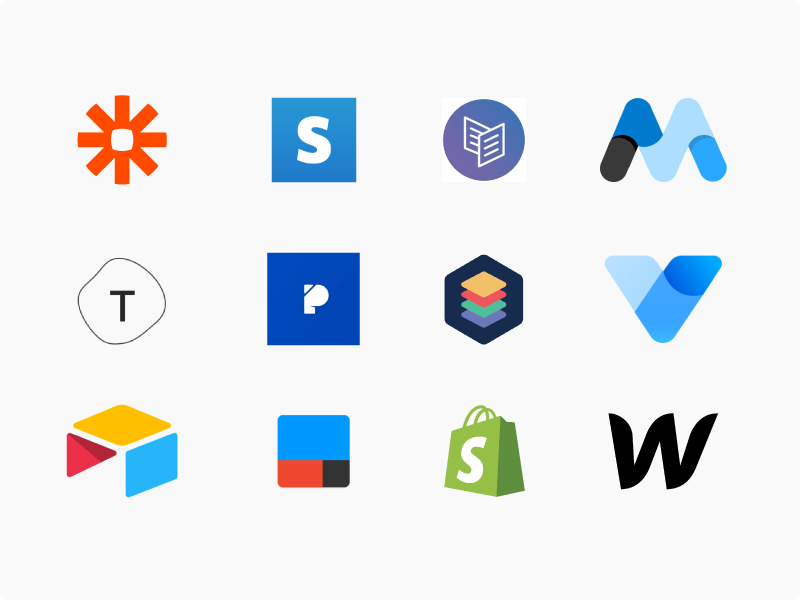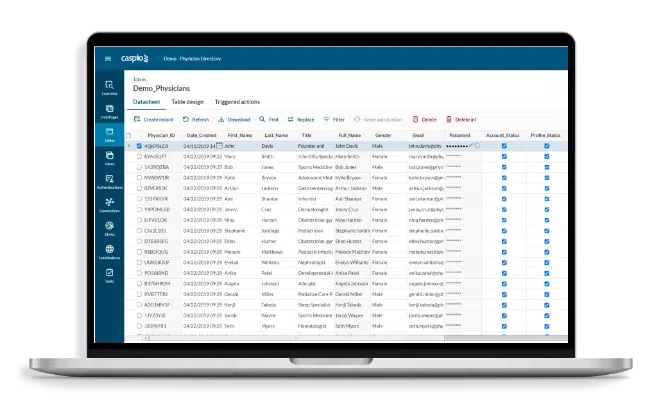No-Code Solutions for Open System Database Production: Build Without Coding Skills
No-Code Solutions for Open System Database Production: Build Without Coding Skills
Blog Article
Exploring the Advantages of Scalable Data Sources That Need No Coding Skills for Effective Information Administration Solutions
The appearance of scalable databases that eliminate the requirement for coding abilities offers a transformative opportunity for organizations seeking effective information monitoring solutions. As we consider the ramifications of such improvements, it comes to be essential to take a look at how they can reshape the landscape of information monitoring and drive sustainable growth in an affordable setting.
Enhanced Availability for Users
Enhanced accessibility for individuals is an essential aspect of scalable databases, guaranteeing that data administration systems are straightforward and instinctive. In a period where data-driven choices are paramount, ease of access allows a wider variety of individuals, including those without comprehensive technical proficiency, to involve with data source systems successfully. This democratization of information gain access to assists in enhanced collaboration throughout divisions, equipping employees to extract understandings and make notified decisions.
Easy to use interfaces, such as drag-and-drop features and aesthetic information depiction, simplify complex information interactions. These enhancements decrease the knowing curve related to traditional database administration, allowing individuals to concentrate on leveraging information instead than coming to grips with technical intricacies. Scalable data sources often incorporate real-time analytics and customizable control panels, giving users with instant insights tailored to their specific requirements.

Cost-Effectiveness and Resource Financial Savings
Effective data administration not only rests on accessibility but likewise on cost-effectiveness and source cost savings. Scalable data sources created for customers without coding abilities dramatically decrease monetary problems normally related to typical database monitoring systems. By getting rid of the demand for specialized programs knowledge, companies can assign their sources more effectively, focusing funds on core organization activities instead than extensive training or employing experienced employees.
Moreover, these data sources frequently make use of cloud-based services, which better reduce expenses connected to equipment and maintenance. Organizations can scale their data source options according to their needs, preventing the expenses incurred from over-provisioning resources. This versatility suggests services can adapt to changing needs without incurring unnecessary expenses, bring about significant long-term cost savings.
In addition, user-friendly interfaces improve information access and management processes, minimizing the moment invested in administrative tasks. This effectiveness translates into labor cost savings, permitting groups to concentrate on strategic efforts instead of regular upkeep. In general, taking on scalable databases that require no coding abilities cultivates a more economical strategy to information management, enabling organizations to maximize their sources while keeping high levels of functional effectiveness.
Improved Collaboration Across Teams

Moreover, scalable databases promote seamless communication amongst staff member. With easy to use user interfaces that call for no coding skills, staff members can quickly create, customize, and share reports or control panels tailored to their details requirements. This democratization of information empowers non-technical individuals to contribute understandings, enhancing the collective atmosphere.
Additionally, these data sources support concurrent gain access to, permitting several customers to work with the exact same dataset at the same time. This function enhances performance, as groups can involve in joint information analysis without the danger of variation control issues. The capability to leave notes or comments straight within the database better promotes discussion and clears up data interpretations.
Streamlined Data Administration Processes
In today's data-driven environment, organizations identify the requirement of streamlined information administration refines to take full advantage of efficiency and accuracy. By leveraging scalable data sources that call for no coding skills, companies can streamline their information handling and minimize the intricacies generally associated with typical database systems. This accessibility equips non-technical users to engage straight with information, promoting quicker decision-making and lowering dependence on specialized IT employees.
Streamlined data monitoring procedures improve workflow by automating regular tasks such as information entrance, validation, and coverage. Automated data integration makes certain that info from various resources is aggregated seamlessly, removing silos and promoting an unified sight of vital business metrics (no-code). In addition, easy to use user interfaces enable personnel to adjust data conveniently, enabling them to generate understandings that drive tactical campaigns without the requirement for comprehensive training.
This effectiveness not just speeds up functional processes however additionally lessens the possibility for human error, making certain that data stays trusted and accurate. Eventually, structured data monitoring procedures through scalable databases bring about enhanced efficiency, permitting organizations to concentrate on core tasks while guaranteeing that their information monitoring practices are effective and effective.
Scalability for Expanding Organizations

For expanding ventures, the capacity to scale up hop over to here or down is essential. A scalable data source can deal with an increase of information generated from new clients, products, or services, ensuring that service operations stay nonstop. Furthermore, these data sources give the ability to handle peak lots successfully, which is vital during durations of quick development or seasonal spikes.
Furthermore, several scalable database services are designed with user-friendly user interfaces that call for no coding abilities, equipping non-technical personnel to handle data efficiently (no-code). This democratization of data monitoring permits companies to allot resources purposefully and decrease dependency on specialized IT workers
Inevitably, adopting a scalable database not only enhances operational effectiveness but additionally promotes an atmosphere where companies can progress and introduce without the restrictions of conventional database systems. This versatility positions companies for long-lasting success in today's competitive landscape.
Verdict
In conclusion, scalable data sources More about the author that call for no coding abilities offer substantial benefits for efficient data monitoring. By streamlining data monitoring processes and using scalability for growing organizations, such services enable companies to adapt to transforming demands properly.
Improved accessibility for individuals is a vital element of scalable databases, guaranteeing that data monitoring systems are instinctive and easy to use.Straightforward user interfaces, such as drag-and-drop functions and visual information depiction, streamline complex information communications. In general, adopting scalable data sources that need no coding skills cultivates a much wikipedia reference more affordable approach to information management, enabling companies to maximize their sources while preserving high levels of functional efficiency.
By leveraging scalable data sources that need no coding skills, services can simplify their information handling and minimize the complexities generally linked with conventional database systems - no-code.Structured data monitoring processes boost workflow by automating regular tasks such as information entry, recognition, and reporting
Report this page